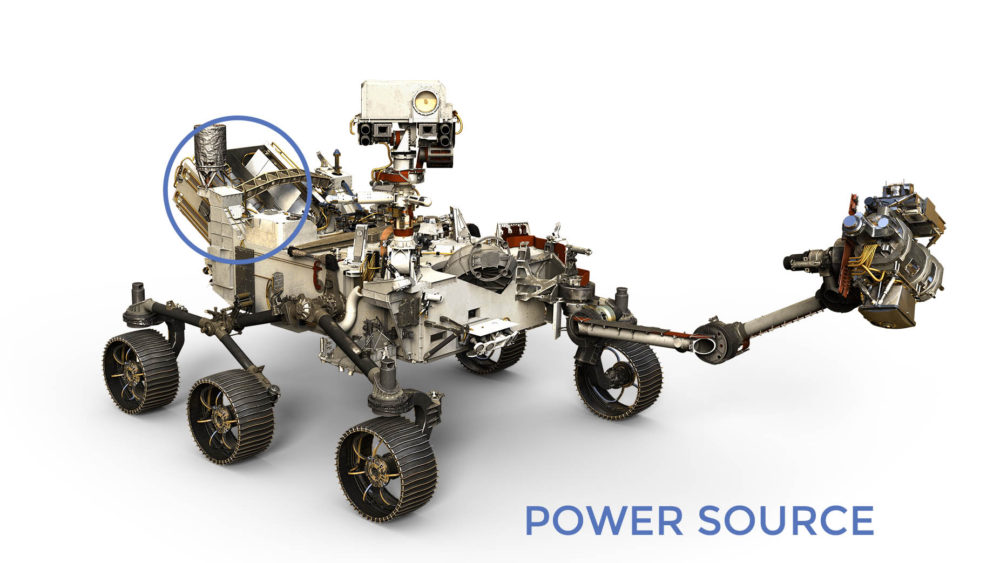Perseverance’s power system works essentially like a nuclear battery. The MMRTG converts heat from the natural radioactive decay of plutonium-238 into a steady flow of electricity. The power system will reliably produce about 110 watts (similar to a light bulb) at the start of Perseverance’s mission, declining a few percent each year in a very predictable way. The MMRTG doesn’t just power the rover; excess heat from it keeps the rover’s tools and systems at their correct operating temperatures.
The MMRTG also charges two lithium-ion batteries, which are used during daily operations and when the demand temporarily exceeds the usual electrical output levels. Perseverance’s power demand can reach 900 watts during science activities.
The MMRTG, located on the aft of the rover, weighs about 99 pounds (45 kilograms) altogether. It contains 10.6 pounds (4.8 kilograms) of plutonium dioxide as its heat source.
The two batteries weigh a total of 58.4 pounds (26.5 kilograms) and each has a capacity of about 43 amp-hours.
More Info Links
https://www.jpl.nasa.gov/news/press_kits/mars_2020/launch/mission/spacecraft/power/
https://mars.nasa.gov/files/mep/MMRTG_FactSheet_update_10-2-13.pdf





Comments are closed.